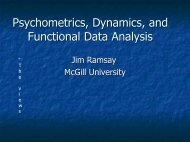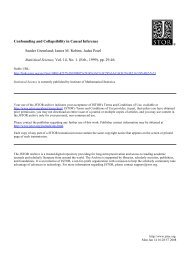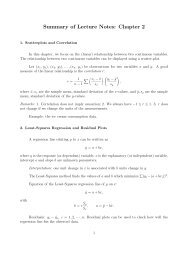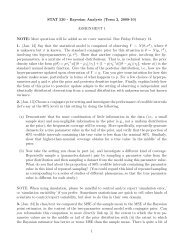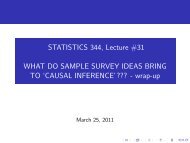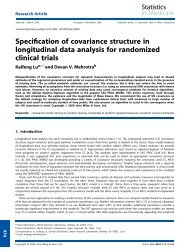Introduction to the EM algorithm - Department of Statistics
Introduction to the EM algorithm - Department of Statistics
Introduction to the EM algorithm - Department of Statistics
You also want an ePaper? Increase the reach of your titles
YUMPU automatically turns print PDFs into web optimized ePapers that Google loves.
And finally in <strong>the</strong> same way using Lagrange multipliers and <strong>the</strong> restriction<br />
that ∑ M<br />
j=1 α j = 1 we have:<br />
ˆα j = 1 n<br />
n∑<br />
i=1<br />
p (k)<br />
ij<br />
.<br />
The updates are as follows:<br />
= ˆµ j<br />
σ 2 (k+1)<br />
j<br />
is ˆσ<br />
j 2 with µ j = µ (k+1)<br />
j<br />
;<br />
α (k+1)<br />
j<br />
= ˆα j .<br />
µ (k+1)<br />
j<br />
We iterate <strong>the</strong> E-step and M-step till convergence.<br />
Camila Souza (UBC) <strong>Introduction</strong> <strong>to</strong> <strong>the</strong> <strong>EM</strong> <strong>algorithm</strong> November 2010 22 / 25




